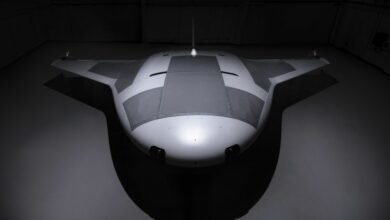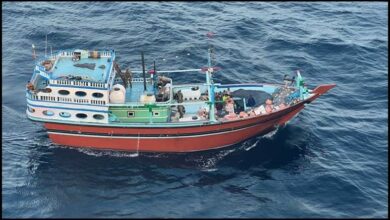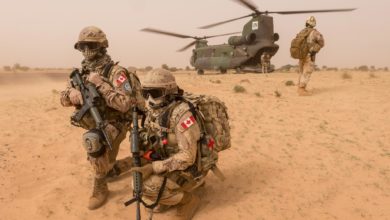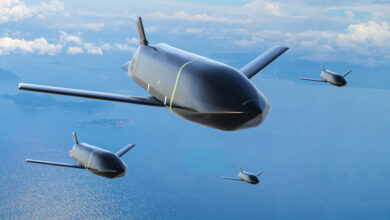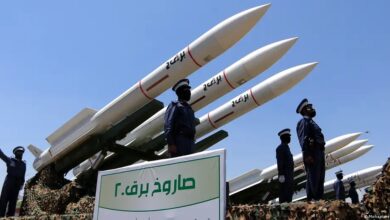
The relationship between Canada and the United States is of immense benefit to both countries. Not only do they share the world’s longest undefended border, but annual trade regularly exceeds $700 billion.
When the severity of the COVID-19 pandemic reached North America, Ottawa and Washington jointly decided to close the border, starting on March 21. That border is still closed and will probably remain so well into 2021.
With the American presidential election just days behind us and the Canadian House of Commons threatening a snap election, this is an interesting time in the Canadian-American relationship, especially as it pertains to security.
Bolstering Defense in North American Airspace
On at least a dozen occasions in 2020 alone, Russian jets have been identified flying into or close to North American airspace. Russia has been caught “probing” various countries on its periphery, likely for weaknesses within their defenses. The states range from Japan in the east to Estonia, Latvia, and Lithuania in the Baltics, to Norway, Sweden, and Finland in Scandinavia, in addition to North America.
With Moscow’s ambitions unknown and its power resurgent in places like Donetsk and Luhansk in Ukraine, Abkhazia and South Ossetia in Georgia, and northwestern Syria, bolstering defense of the North American airspace is a crucial priority for leaders and policymakers.
#NORAD works across a vast network of military organizations, civilian security agencies and industry to build global maritime domain awareness. #ReadyTogether#MaritimeWarning @USNavy @RoyalCanNavy @USCG @CoastGuardCAN #MaritimeSecurity pic.twitter.com/8GtaJMWlQa
— North American Aerospace Defense Command (@NORADCommand) October 21, 2020
Created in 1947 and founded in 1958, the North American Aerospace Defense Command (NORAD) has connected Canada and the US in a Cold War-era defensive union, which protects their common territorial concerns from aerial attack.
To accomplish this aerospace control mission, NORAD utilizes “satellites, ground-based radar, airborne radar and fighters to detect, intercept and, if necessary, engage any air-breathing threat to North America.”
For many on both sides of the Canadian-American border, this signifies a vital relationship that is buttressed by membership in multilateral organizations such as the North Atlantic Treaty Organization (NATO) and the United States-Mexico-Canada Agreement (USMCA, formerly NAFTA).
NORAD and Evolving Threats
NORAD has proven to be especially enduring, not just fulfilling its mission defending against a possible Soviet/Russian bombing raid, but expanding into other warfare domains.
Although the wider public generally only interacts with NORAD once a year (parents with young children can follow Santa through NORAD’s Santa Tracker), the organization does much to protect North America’s physical territory, even as threats are rapidly evolving through technological innovations.
With the advance of cyberwarfare as a fifth domain of warfare (alongside land, sea, air, and space), NORAD’s importance remains intimately connected to protections of the vast territory of Canada and the US in the High North.
Future of NORAD
Traditionally, the Canadian forces base in Winnipeg, MB, and US air force bases in Elmendorf, AK, Tyndall, FL, and McCord, WA, served as central locations for NORAD (Peterson AFB in Colorado serves as the formal headquarters).
In recent years, Thule AFB in Greenland has also gained traction given its connection for unmanned radar systems that protect the North American territory. President Donald Trump’s flirtations with Greenland, possibly connecting the Danish protectorate as part of NORAD, as well as The Heritage Foundation’s admonition to extend membership to Mexico, leave the future of NORAD unknown.

The question regarding NORAD’s enlargement is a good one and may be useful later, but the key in the current environment is to nurture the Canadian-American relationship further.
Even though the relationship between Prime Minister Justin Trudeau and President Trump is generally viewed as tense, the two have so far managed to maintain outward cordiality and weathered several contentious cross-border issues over the renegotiation of NAFTA. There is a recognition, seemingly, on both sides that the bilateral relationship is important even if there are interpersonal fissures.
History of US-Canada Ties
This is not the first time the Canadian-American relationship faced duress at the highest level. The Harper-Obama (2009-2015) relationship had issues, as did Chrétien-Bush (2001-2003) and Martin-Bush (2003-2006).
In fact, there is a long history of antagonism between leaders of the two countries, ever since the British North America Act of 1867 created an independent Dominion of Canada with sovereignty over domestic affairs. For example, there were issues between President Lyndon Johnson and Prime Minister Lester Pearson in the 1060s, and some antagonism between President Ulysses Grant and Prime Minister John Macdonald a decade earlier.
A Canadian prime minister can never be seen as weak regarding the US, and an American president should not come across as uneducated on Canada. Even with prime ministers and presidents of the same political ideology, there are still tense issues through which the leaders need to work.
Yet, even with the necessary diplomatic peacockishness on both sides, there is something fragile about this moment. With the border closed, tension over dairy and automotive industries, and antagonistic Trump-Trudeau relations, the shared successes of Canada and the US must not fall by the wayside — security, trade, and prosperity all remain vital to both countries.
US Elections
The United States is just a few days removed from its quadrennial presidential election. Concomitantly, the Canadian government could likewise be at a crossroads. Since the 2019 federal election proved inconclusive, the Liberal minority government continues to stumble forward, but with the possibility of a snap election.
The moment between the two countries is an interesting one, especially in a time of COVID-19 and a closed border.
Yet, NORAD must remain a high priority, especially as some of the North American Warning System infrastructures are aging. Nurturing the Canadian-American relationship must be prioritized regardless of who resides in the White House and 24 Sussex Drive.
 Glen Duerr, Ph.D., is Associate Professor of International Studies at Cedarville University. Born and raised in the United Kingdom, Glen lived in Canada for a decade obtaining Honors B.A. and M.A. degrees. He then moved to the United States where he obtained a Ph.D. in Political Science. Dr. Duerr is the editor of Secessionism and Terrorism (Routledge, 2018), and author of Secessionism and the European Union (Lexington Books, 2015). He and his wife, Rebecca, live in Ohio with their three children.
Glen Duerr, Ph.D., is Associate Professor of International Studies at Cedarville University. Born and raised in the United Kingdom, Glen lived in Canada for a decade obtaining Honors B.A. and M.A. degrees. He then moved to the United States where he obtained a Ph.D. in Political Science. Dr. Duerr is the editor of Secessionism and Terrorism (Routledge, 2018), and author of Secessionism and the European Union (Lexington Books, 2015). He and his wife, Rebecca, live in Ohio with their three children.
Disclaimer: The views and opinions expressed here are those of the author and do not necessarily reflect the editorial position of The Defense Post.
The Defense Post aims to publish a wide range of high-quality opinion and analysis from a diverse array of people – do you want to send us yours? Click here to submit an op-ed.


